The Table Mountain National Park in South Africa is a rich region in terms of its outstanding geographic formations, rare and beautiful plant life, and numerous animal species.
The main thing at the park, and the part that gives it its name is the Table Mountain, one of the most iconic peaks not only in South Africa but also in Africa.
But the mountain and its adjacent peaks only form a small portion of the park which covers about ¾ of the Cape Peninsula region.
Table Mountain National Park is a significant conservation area in the Cape region, and it also forms part of the world heritage site known as the Cape Floral Kingdom, and is one of the best parks to visit in South Africa overall.
Let’s get to know more about this wonderful region and what it has to offer.
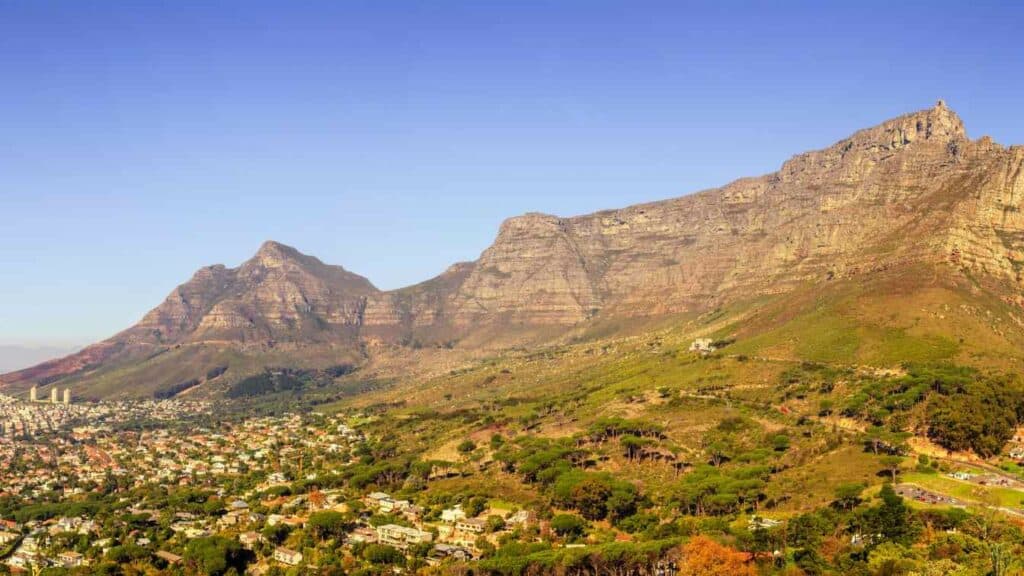
A Brief History of Table Mountain National Park.
The history of the park in a way also includes the history of Table Mountains. These mountains are quite old, with some rocks on the mountain being about 600 million years old, and the mountain itself just 240 million years old.
The mountain itself is much older than the Himalayas, Rockies, Andes and Alps. The Table Mountain region has been inhabited by the Khoikhoi for more than 30,000 years, and the mountain itself was sacred to the Khoisan who believed their god resided there.
These people gave the mountain the name, “Hoerikwaggo” meaning mountain in the sea.
What is now Table Mountain National Park was originally the Cape of Good Hope Nature Reserve which was established in 1939. Due to high fire incidences in the 70s, all area in the Cape Peninsula above 152 m (498.7 ft) was considered for conservation.
This eventually led to the formation of the Cape Peninsula Protected Natural Environment (CPPNE).
The Management of the protected area together with an additional 39,500 acres (61.2 mi²) was handed over to SANParks ( The South African body in charge of National parks, game reserves, and other protected areas.) in 1998.
That same year President Mandela proclaimed it the Cape Peninsula National Park. In 2004, it was then renamed to Table Mountain National Park.
How To Get to Table Mountain National Park In South Africa?
The park is within the Cape region of South Africa and the nearest town is South Africa’s capital city, Cape Town.
Cape Town International Airport is the closest international airport to the park. Within the park, only a few areas allow private vehicle access, which are Signal Hill and Cape of Good Hope.
Within these areas, speed limits are strictly enforced, while other areas offer secure parking spaces at the entrances such as Oudekraal, Newlands, and Silvermine.
The park is quite large and has different sections with different ways of getting there:
- Boulders Beach is found in Simon’s Town and you’ll use the M4 or M3 highway for about 40 km (24.8 mi) from Cape Town.
- To get to Cape Point, you’ll use the M4, through Simon’s Town and Miller’s Point, and then onto the M64 and M65 through Sun Valley and Scarborough for about 64 km (40 mi).
- To get up Table Mountain, the easiest way up is by using the Cable car service.
You can use public transport which will drop you at the Lower Tafelberg Road stop from which you’ll hop onto the Table Mountain free shuttle service to the Lower Cable Station. - If you use an Uber, local metered taxi, or sightseeing bus, then you can stop at the Upper Tafelberg Road Stop.
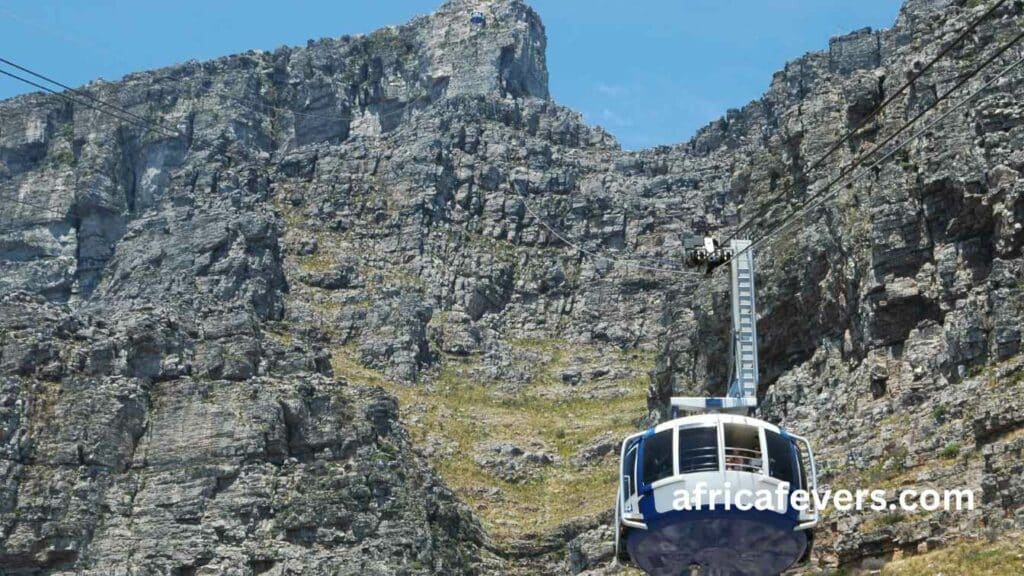
Unique Geography Of The Region of the Table Mountain.
The geology of a place can often be overlooked but the Table Mountain Region has a unique geography about it. The region is made up of ragged, and rocky mountainous areas, small sheltered bays, and clean open beaches.
The area is made up of three different but major rock formations which are; dark grey mudstone, the oldest of the three, cape granite and the youngest, table mountain sandstone.
The Wildlife of the Table Mountain National Park
1. Plantlife
TIP: Read all about the Garden Routhe of South Africa here.
- The most common type of vegetation found in the park is fynbos (fine bush). This type of vegetation is quite old, being about 60 million years old, and highly endemic to the region.
The fynbos in the region are sometimes endemic to only a small part of the park, and this specific endemism together with environmental degradation has led to the area being proclaimed a biodiversity hot spot.
The fynbos are dependent on wildfires for their growth and overall health, but these wildfires need to be about 15 years apart to be beneficial. Constant wildfires are destructive to the overall ecosystem, often killing young seed-bearing buds.
But also invasive plant species can have an impact, so removing them is sometimes necessary, as you can see in the video below:
- The fynbos consists of four major plant groups; proteas, which are large shrubs with wide leaves, Restios, which are reed-like plants, Ericas, which are low growing heath-like plants, and, Geophytes which occur mainly in wetland areas and are bulb-like.
- The next type of vegetation you’ll find in the park is known as Renosterveld (Rhinoceros field). This is made up of tall open grassland and shrublands mainly found on the slopes of Devil’s Peak and Signal Hill.
This vegetation is grassy due to a lack of grazing and frequent wildfires. The vegetation burns up every 3 to 5 years which is their natural cycle, but their proximity to Cape Town’s urban sprawl means these wildfires are often put out. This lack of wildfire frequency leads to the death of this type of vegetation, and encroachment by alien thatching grass.

The other vegetation group in the area is the Afromontane forests which occur below 800 m (2624.7 ft), in areas with nutrient-rich soils, and good rainfall.
Today only small pockets of Afromontane forest still stand in the region as they were heavily harvested during the European settlement of the Cape region.
It consists of about 33 species of trees that are of medium height of 15 to 20 m ( 49.2 to 65.6 ft) and evergreen. They are primarily found on the slopes of Table Mountain.
- The last vegetation group in the park can be found along rivers and in wetlands. These areas have slightly acidic conditions limiting the variety of plants that can grow here, but the plants that do are quite rare and special. Examples include plant species such as the Erica heleogena, Bokmakieriestert, and leucodendrons.
2. Birdlife
When compared to other areas such as the Northern and Eastern regions of South Africa, the Cape Peninsula region doesn’t have an impressive number of bird species. The park though has a diverse range of habitats from fynbos, forests, rocky highlands, shorelines, and ocean.
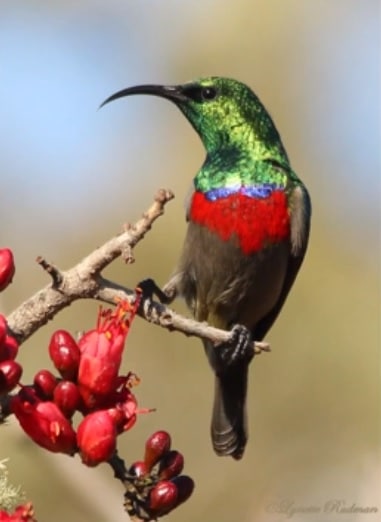
Also, the geographic position of the park means it often has many vagrant birds (these are bird species that are outside their breeding and wintering locations) that are blown off course as they migrate.
In the fynbos region of the park, you’ll find birds such as:
- Lesser Double Collared Sunbird,
- Malachite Sunbird,
- Orange Breasted Sunbird,
- Cape Sugarbird,
- Karoo Prinia,
- Grey Backed Cisticola,
- Ground Woodpecker,
- Cape Rock Thrush,
- and Cape Siskin.
In the forested areas, and patches of Afromontane forests you’ll find bird species such as:
- the Knysna Warbler,
- African Goshawk,
- Rufous Breasted Sparrow-Hawk,
- African Wood Owl,
- Cinnamon Dove,
- African Olive Pigeon,
- Paradise Flycatcher, Dusky Flycatcher, Cape Flycatcher,
- Cape Batis,
- Olive Thrush,
- and Sombre Bulbul.
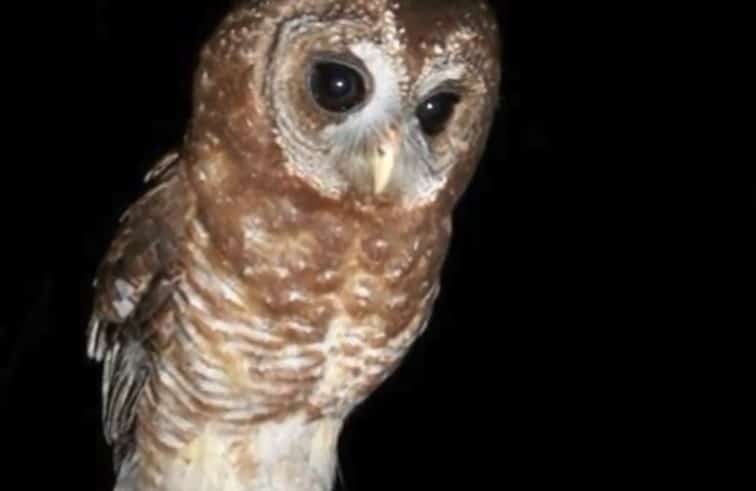
Raptors can be found at much higher elevations and some species to look out for include:
- the Peregrine Falcon,
- Rock Kestrel,
- Steppe Buzzard,
- Jackal Buzzard,
- and Verreaux’s eagle.
The area has an abundance of marine birds with the main highlight being the African penguin whose colony can be found at Boulders Beach.
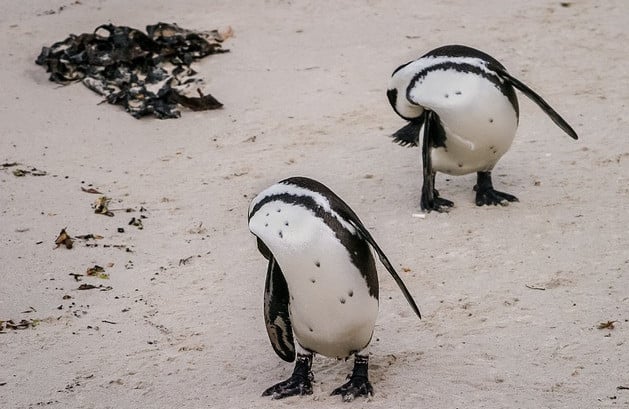
Other marine species include 4 species of Cormorants, Black Headed Gulls, African Black Oystercatchers, Giant Petrel, White Chinned Petrel, Sooty Shearwater, Black Browed Albatross, and Cape Gannets.
Other Animals.
Historical evidence shows that the area was once abundantly populated by a variety of well-known large carnivores such as lions, hyenas, and leopards.
Hunting and habitat degradation have wiped them from the area. Mammal species such as antelopes that are well-developed to feed on the fynbos are small and generally difficult to spot.
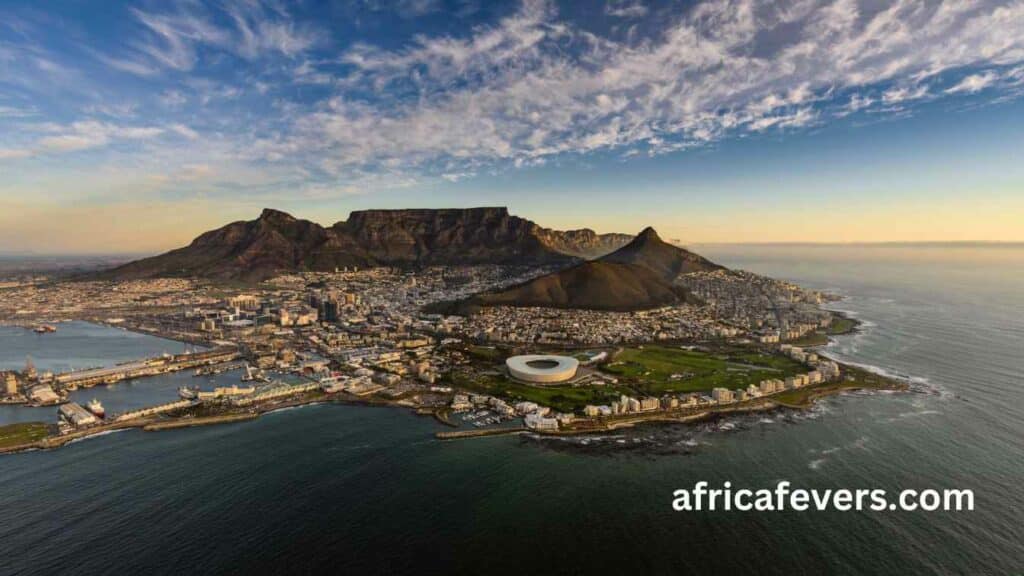
Some mammals to spot in different sections of the park include; Klipspringer, Grey Rhebok, Common Duiker, Red Hartebeest, Eland, Cape Fox, Chacma Baboon, Porcupine, Caracal and Cape Mountain Zebra.
The park plays with a variety of interesting reptiles and amphibians. The park is home to 2 species of tortoise though they are tiny; these are the Parrot Beaked and Angulate tortoises.
Lizards found here are quite colourful such as the Cape Skink, Black Girdled lizard and Southern Rock Agama.
The park is also home to about 22 species of snakes with 10 of them being poisonous. The most likely of these poisonous snakes you’ll encounter is the puff adder.
Insects are also abundant in the park and some have become highly specialized in the service of specific plants like the Mountain Pride Butterfly.
Climate And Best Time To Visit Table Mountain National Park
The Cape Peninsula region can be termed as a Mediterranean climate. This is characterized by hot and dry summers, and wet, mild winters. The warmest months run from December to March, June is the rainiest month and mild winter runs from June to August.

Activities To Do In The Table Mountain Park.
Visiting the Jackass penguins at Boulders Beach.
You can plan to visit the African or Jackass Penguins colony at Boulders Beach in Simon’s Town. The place has boardwalks leading visitors across the beaches where the Penguins are. Visitors can also get the rare chance of swimming with these delightful birds.
Visit the Botanical Gardens at Kirstenbosch
Kirstenbosch Botanical Garden is important as it is 1 of 10 botanical gardens in South Africa. The gardens have an emphasis on protecting and preserving flora that is native to South Africa. It is located on the Eastern slopes of Table Mountain covering an area of about 36 ha (0.14 mi²).
A walk in the gardens particularly in summer is a good way of enjoying the vibrant plant life of South Africa.
Visit Cape Point
Cape Point is one of the must-visit sites when visiting the Table Mountain National Park area, as one of its main attractions is the Cape of Good Hope. Cape Point is located at the tip of the Cape Peninsula and is 60 km (37.2 mi) from Cape Town.
Here you can view the birds and whales, hike the cliffs and see some spectacular animals such as Baboons Eland and Zebra.
Hiking and trails.
Many scenic locations within the park allow hikers to explore the beauty of the wildlife and the views at Table Mountain. Below are some of the top hiking trails you can find.
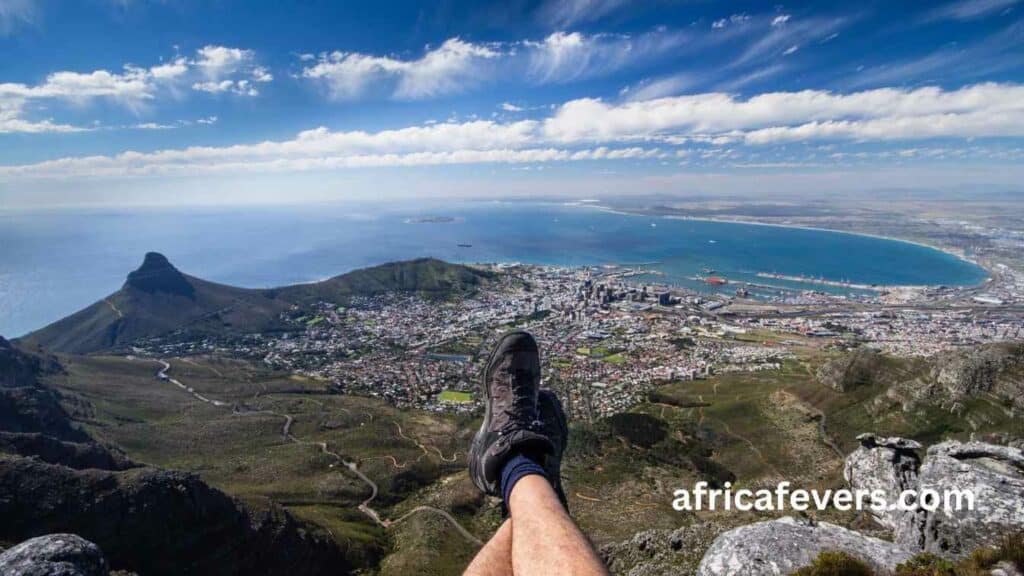
- Lion’s Head Trail
This is an easy trail about 2 km (1.2 mi) long climbing to the top of Lion’s Head Peak. The hike takes on average 2 hours and starts at Signal Hill Drive which is below and climbs 669 m (0.4 mi) to the summit for some breathtaking views.
- Constantia Nek Trail
This is another trail hike up Table Mountain, but is the least strenuous of the trails. It covers a distance of about 7 km (4.3 mi) and takes about 2 hrs to complete.
- The India Venster Hike.
This is the most challenging trail to the top of Table Mountain and one of the most technical hikes in the park. It covers a distance of 3.7 km (2.3 mi), covering an altitude of 0.7 km(0.4 mi), and takes an average of 4 hrs to complete.
- Platteklip Gorge Trail.
The Platteklip Gorge trail from the upper cableway station to the peak of Table Mountain is one of the most popular and demanding hiking trails in the park.
The trail follows the main Gorge that divides the front face of the mountain. The trail is about 3 km long and takes about 3 hrs to complete.
The trail is quite steep but is well maintained with steps carved into the rock. The best time to start this hike on a clear sunny day is early morning as the trail is well-lit by the sun and can get quite scorching.
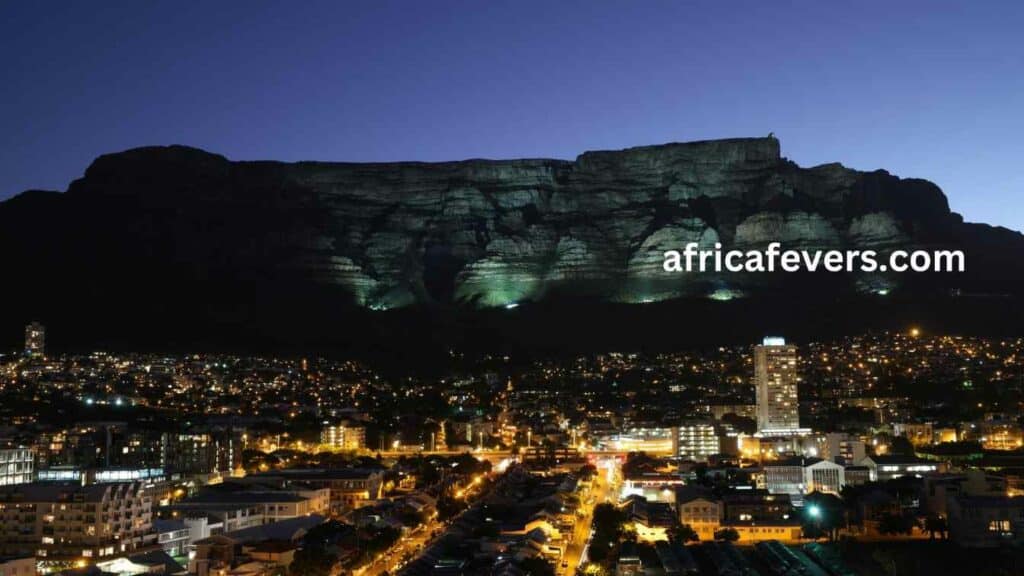
Accommodation options at Table Mountain National Park
Being close to Cape Town means there are a variety of accommodation options ranging from budget to high-end luxury. But some want to be in touch with nature and will look for options within the park. Below are some cottages within the park’s confines.
Olifantbos cottage
This is a unique accommodation option located deep within the Southern Part of the Cape of Good Hope, and offers visitors sereneness and a private beach.
The cottage is big, having 3 double rooms, and a fully kitted gas-powered kitchen. Water is provided from storage tanks within the site and lights are powered by a solar panel system.
Overseers Mountain Cottage
Overseers Mountain Cottage is situated on Table Mountain and offers visitors incredible views of the Cape Peninsula area.
The cottage can host up to 16 people in 2 fully equipped and self-catering units. The unit is quite remote and can be accessed only by foot through a hike up and down the mountain.
Also, prior arrangements have to be made at Platteklip Wash Houses, to be able to plan how equipment will reach the cottage and when the visitors need to be there.
Slangkop Tented Camp
This camp is located at the edge of Kommetjie village in a grove of endemic milkwood trees about 100 m (328 ft) from the Atlantic Ocean.
Smitswinkel Tented Camp
This camp is situated just before you enter the Cape Point gate and is located in a plantation of weathered flowering gums. The camp is a good point from which to visit Boulders Beach which is just 15 minutes away. The tents here can accommodate up to 12 people and no strictly no more.
Rates and Fees of Table Mountain National Park.
Always be aware that entrance fees can change over time!
| Location | South African Nationals | SADC Nationals | International Visitors |
|---|---|---|---|
| Boulders Point | R25 | R45 | R50 |
| Cape Point | R50 | R100 | R100 |
| Newlands | R20 | R40 | R40 |
| Oudekraal | R20 | R40 | R40 |
| Silvermine | R20 | R40 | R40 |
| Kirstenbosch Botanical Gardens | R25 | R80 | R25 |
Things To Note.
Most of the park is free and open to the public except 4 segments. These are at Boulders Beach, The Silvermine Section, at Cape Point, and Kirstenbosch National Botanical Gardens.
Cape Point and Boulders Beach are cashless and payment is through credit and debit cards.
For those planning to hike any trails, then they should have a good map, sunblock, a wide hat, a torch if camping overnight, water and energy snacks, and good hiking boots.
FAQS.
Is Table Mountain one of the 7 wonders of the world?
Table Mountain is one of the 7 wonders of the natural world and was chosen in 2011 by over 500 million individuals.
Who owns Table Mountain National Park?
The land of the Table Mountain National Park is owned and conserved by the South African National Parks , but there are also sections of private land that are managed by Sanparks.
My Final Conclusion.
I hope that you found this article on the Table Mountain National Park in South- Africa interesting and if you have any more questions, please feel free to leave them down below in the comment section.
You can now also join my social media channels below for more pictures, videos, and stories about my travels to Africa!
I wish you happy travels!
Kind regards,
Lizzy
I now have a YouTube channel as well!
YouTube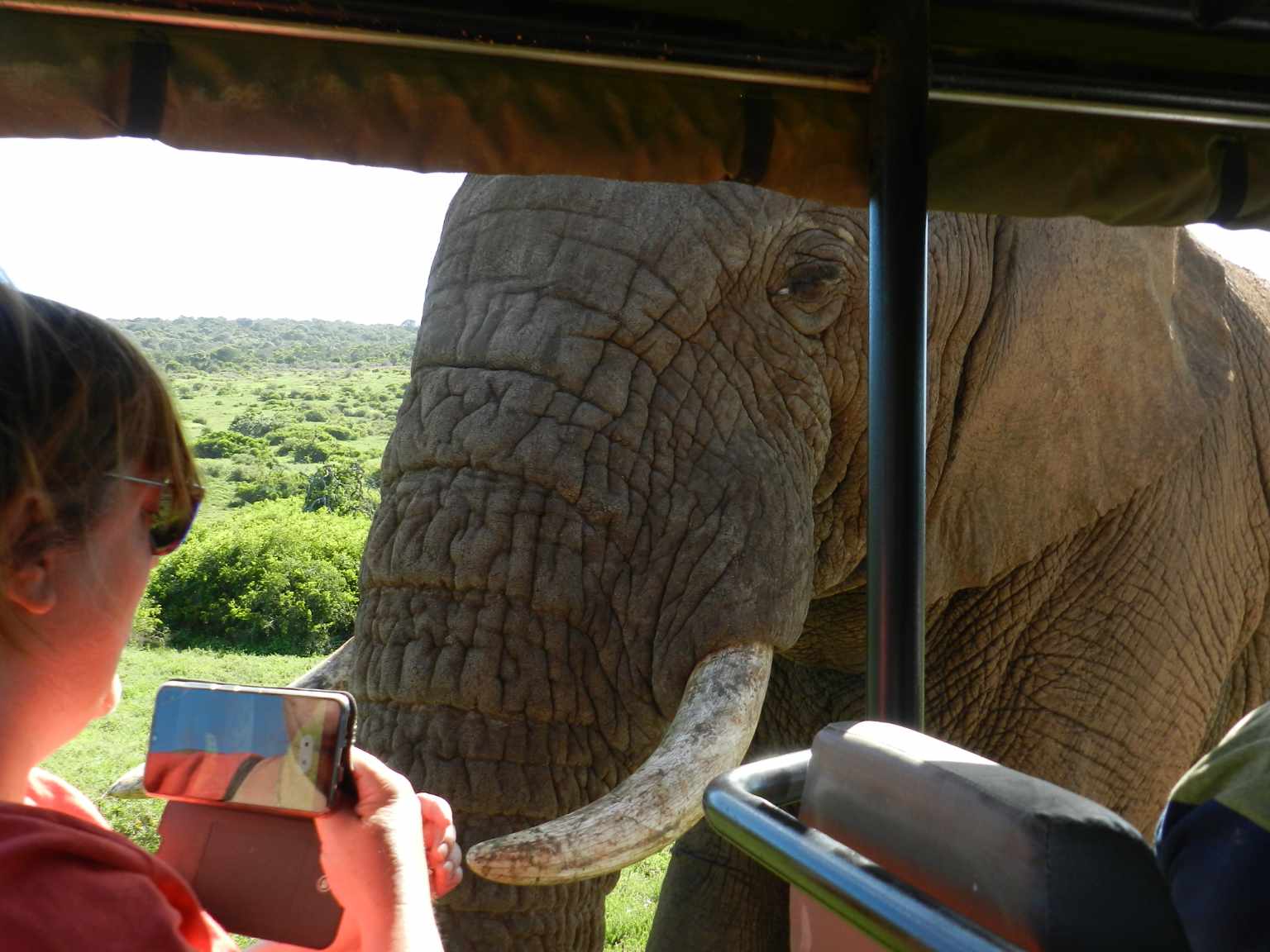
Hello Africa travellers!
Who am I? Well, the least you can say is that I am quite crazy about Africa, its nature, its climate, its culture, and more.
As a young woman in my twenties, I had already traveled to several African countries by traveling along in an overlander on my own and mostly camping ( or glamping ) and just fell in love with the diversity of it all.
So much, so that at the age of 26, I went back to university to study biology, which, unfortunately, I couldn’t finish because of health reasons (yes, I got sick from a tropical disease, oh cynicism). But this did not stop my dream of traveling back to Africa several times, and I still do.
My dream was back then to leave Europe and go study animal behavior, especially the elephants (sure, that’s every girl’s dream haha), but I am also very much intrigued by hyenas and other “ugly African animals“.
So, I “kind of” have a little bit of a scientific approach to my articles, when I write about African birds, for example. And most of all: the passion.
But life goes on, you move from one side of the country to the other, you get sick again and top it off with lower back problems, and before you know it, you are over 50 hahaha!
Now, I still travel to Africa, but take it a bit “easier” than the good old camping days, and stay in comfortable, yet affordable accommodations, together with my husband Wouter.
These are some of the countries I have traveled to: Kenya, Tanzania, Zanzibar, Malawi, Zambia, Zimbabwe, South Africa, Namibia, Botswana, Tunisia, and a little bit of Lesotho LOL .
While clearly not being African territory, but Spanish, I also visited Gran Canaria and Tenerife, and location-wise, I consider them “African”, because of their climate and nature, sue me :-p
The last trip I took was to South Africa in the year 2023, and it sure got the fevers for Africa back! From the Barberton mountains to the Drakensberg and the Southcoast, one month wasn’t enough at all to see the whole country, so we’ll be back! At ease and with a little bit more luxury than in my younger days haha!
I wish you happy travels!
Kind regards
Lizzy

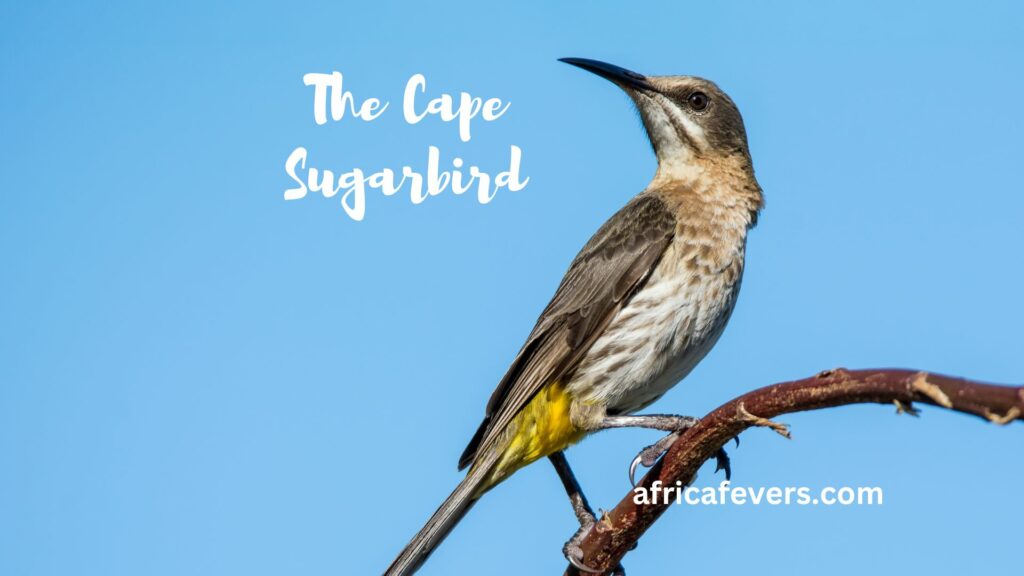
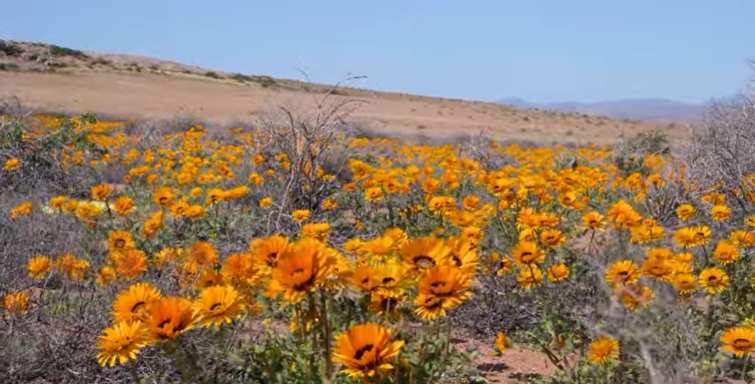
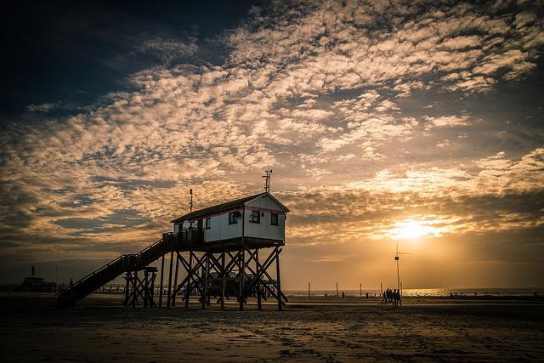

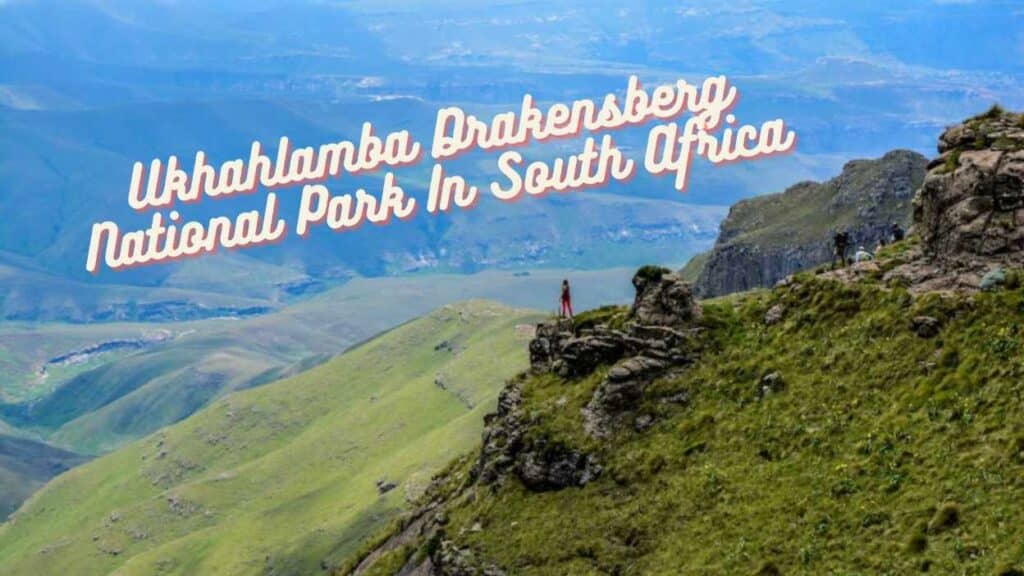

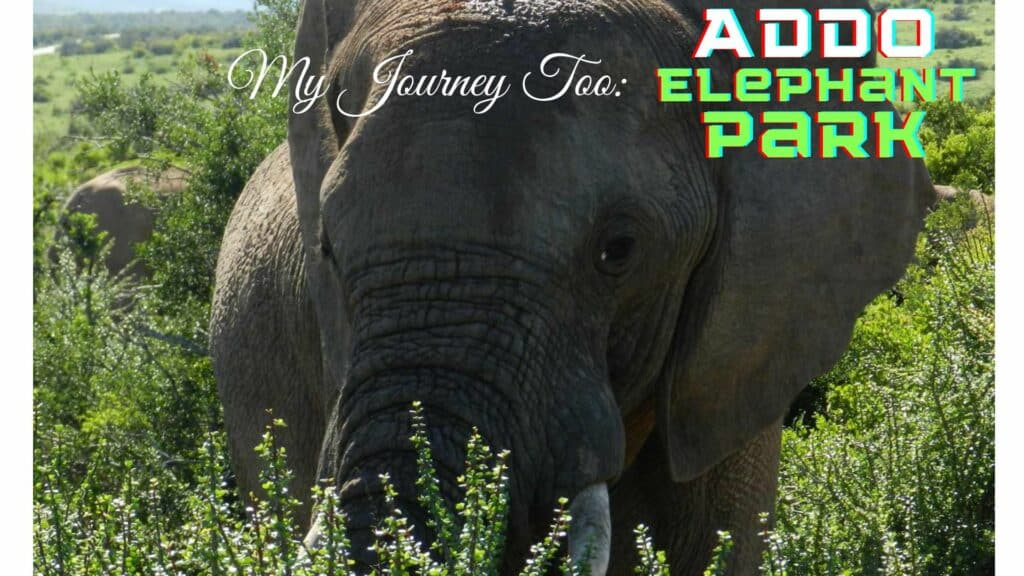



Hi Lizzy –
South Africa, specifically, Table Mountain National Park is one of the most well-known places in the world. I learned something new about the mountains – they are over six hundred million years old. Wow!
For adventure seekers, there is a lot of activities from hiking to admiring the views and animals. I love traveling, so South Africa is on my list of places to visit.
Godwin
Hi Godwin
I totally agree with you and I’m glad that my article still learned you something:-)
Also, I hope that you get to South-Africa soon! I have visited a few times and I would like to go back soon!
I wish you happy travels!
Lizzy
Thanks Godwin, happy travels!
Hey, this is a true marvel, and I can’t help but be captivated by its natural wonders. Having personally experienced the breathtaking landscapes and encountered the rich diversity of wildlife, it’s a profound journey into the heart of nature’s beauty. For anyone seeking an unforgettable escape, this park is a testament to the extraordinary magic our planet has to offer.
Thanks Jake 😊